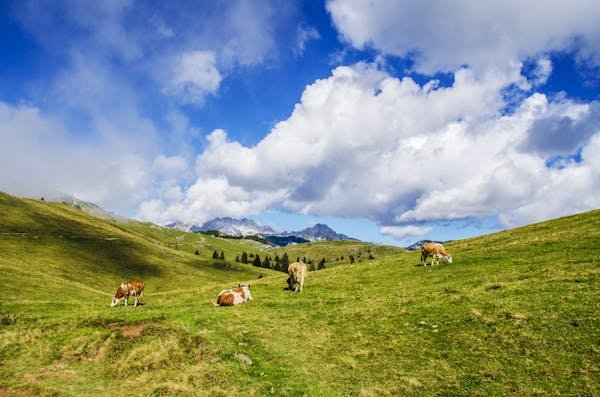Regenerative agriculture is an innovative approach to farming that focuses on revitalizing the health of ecosystems, enhancing biodiversity, and restoring soil health. Among the various methods used in regenerative agriculture, the integration of livestock, particularly cows, plays a pivotal role. This article explores how cows contribute to building healthy soil, thus promoting a more sustainable agricultural system.
Understanding Regenerative Agriculture
Regenerative agriculture aims to reverse the degradation caused by conventional farming practices. This approach seeks to improve soil health, increase biodiversity, and enhance ecosystem resilience. Key principles include minimizing soil disturbance, maintaining soil cover, and integrating livestock into cropping systems. By doing so, regenerative agriculture can lead to carbon sequestration, improved water retention, and enhanced soil fertility.
The Role of Cows in Soil Health
- Nutrient Cycling
Cows are natural nutrient recyclers. Their grazing habits stimulate plant growth and promote nutrient cycling within the ecosystem. As cows graze on pasture, they consume grass and other forage, breaking it down in their digestive systems. The undigested material is returned to the soil as manure, enriching it with essential nutrients such as nitrogen, phosphorus, and potassium. This natural fertilization process enhances soil fertility and promotes healthy plant growth.
- Soil Aeration
Cows contribute to soil aeration through their grazing and movement. As they walk and graze, their hooves create small disturbances in the soil. This process helps break up compacted soil, allowing air, water, and nutrients to penetrate deeper into the ground. Aerated soil supports the growth of beneficial microorganisms, which are vital for nutrient availability and soil health.
- Improving Soil Structure
Healthy soil structure is essential for water retention, drainage, and root development. Cows play a critical role in improving soil structure by trampling grass and other plants. This trampling action creates a mulch layer, protecting the soil surface and reducing erosion. Additionally, it encourages the development of soil aggregates, which enhance soil porosity and stability.
- Promoting Biodiversity
The integration of cows in regenerative systems promotes biodiversity at multiple levels. Their grazing patterns create a mosaic of different plant communities, which in turn supports a wide range of soil organisms, insects, and wildlife. This biodiversity is crucial for ecosystem resilience, helping to maintain healthy soils and productive farms.
- Carbon Sequestration
One of the most significant benefits of integrating cows into regenerative agriculture is their potential to sequester carbon. Well-managed grazing systems can enhance the soil’s organic carbon content, effectively capturing atmospheric carbon dioxide. Through the process of photosynthesis, plants absorb carbon, which then enters the soil when plants die and decompose, further enriching it. This carbon sequestration not only helps combat climate change but also improves soil health.
Implementing Cows in Regenerative Systems
To maximize the benefits of cows in regenerative agriculture, farmers should adopt practices such as:
- Rotational Grazing: This involves moving cows between different pasture areas to prevent overgrazing and allow grass to recover, enhancing both pasture health and soil quality.
- Multi-Species Grazing: Integrating other livestock species with cows can further enhance biodiversity and nutrient cycling.
- Cover Cropping: Planting cover crops during the off-season can protect the soil, prevent erosion, and provide additional forage for cows.
Conclusion
The role of cows in regenerative agriculture is multifaceted and crucial for building healthy soil. By fostering nutrient cycling, improving soil structure, enhancing biodiversity, and sequestering carbon, cows contribute significantly to sustainable farming practices. As the world faces increasing environmental challenges, integrating livestock like cows into regenerative systems offers a promising pathway toward healthier ecosystems and more resilient agricultural practices. By prioritizing these methods, farmers can cultivate not only productive land but also a sustainable future for generations to come.

